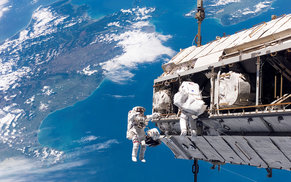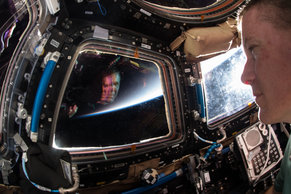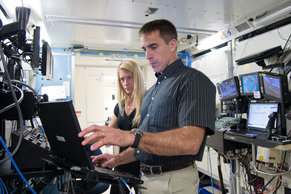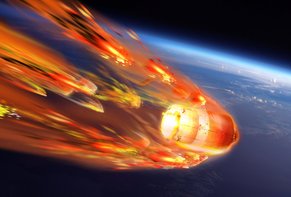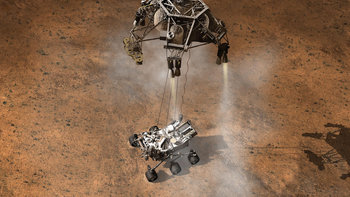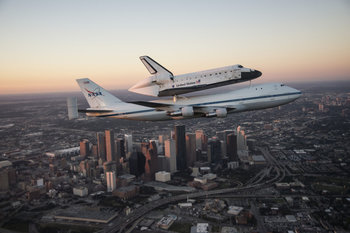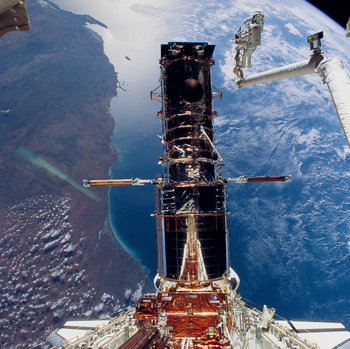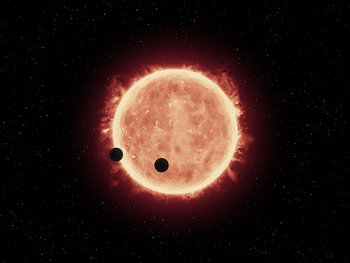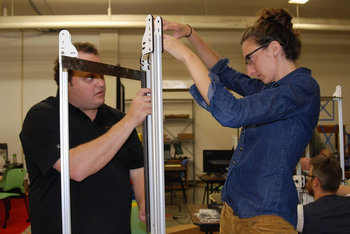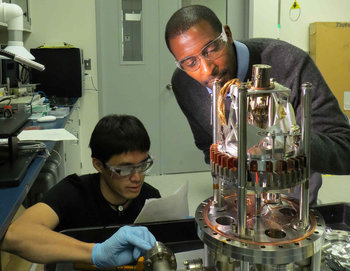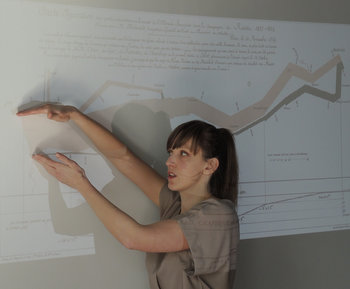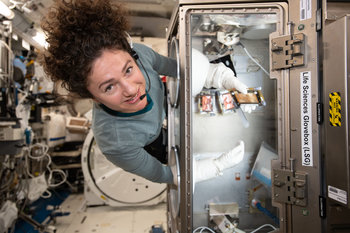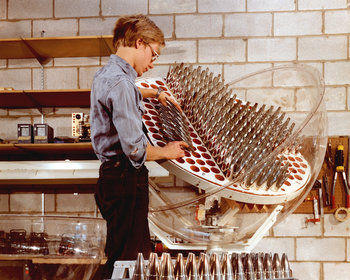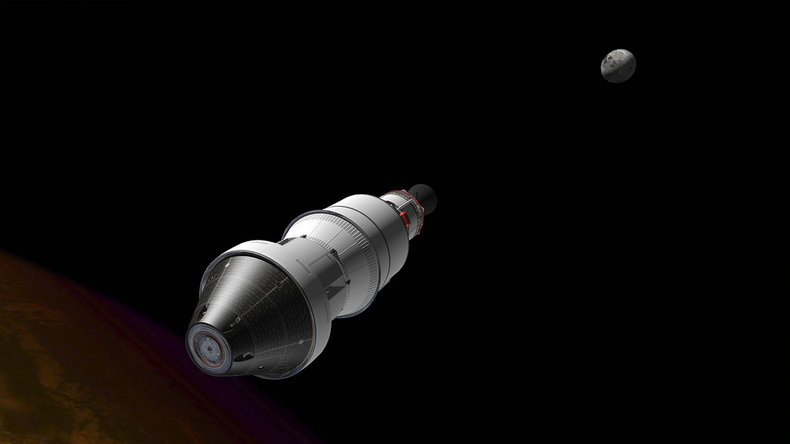
Aristotle
Movement on Earth is heavily influenced by gravity and other factors such as air resistance. As such, it is natural to think that things don't move unless they are constantly pushed to do so. This is exactly what classical thinkers, such as Aristotle incorrectly believed. Interestingly, Aristotle almost discovered the idea of inertia with the following argument.Why a body which has been caused to be in motion will stop somewhere; for why should it stop in one place rather than another? So either it will be resting or it will of necessity be traveling without an end . . .Above, Aristotle is arguing against the possibility that vacuums exist. He suggests that vacuums, which he called a void, are an absurd idea because objects could travel forever without end with a single push. Aristotle was wrong about vacuums. He was also wrong that an object moving in a single direction forever is absurd as this is inertia. In other words, Aristotle's assumption that inertia was obviously absurd prevented him from making two profound discoveries.
~ Aristotle, Physics, IV.8 [Apostle, pp.73]
Galileo
Galileo was aware of inertia but defined it in terms of movement along curved surfaces such as the surface of the Earth. This was a slightly incorrect view as we now know inertia has nothing do to with curved surfaces.A ship, for instance, having once received some impetus through the tranquil sea, would move continually around our globe without ever stopping.
~ Galileo, Letters on Sunspots, 1613
Newton
Newton redefined inertia in terms of straight lines creating an accurate law of physics that remains valid and useful today.The vis insita, or innate force of matter, is a power of resisting by which every body, as much as in it lies, endeavors to preserve its present state, whether it be of rest or of moving uniformly forward in a straight line.
~ Isaac Newton, First Law in Philosophiæ Naturalis Principia Mathematica
Stationary Objects
Inertia states that a stationary object will remain stationary unless forces act upon it. This is the reason you can theoretically pull a table cloth from a set table without disturbing anything. The table cloth may cause some minimal friction with the objects on the table but not enough to disturb their inertia. Gravity also helps by pulling down on the objects on the table.Friction
Friction is the force of materials moving against each other. For example, a cart with no wheels doesn't benefit from much inertia because of friction between the cart and the ground. If you add wheels to the cart, friction is reduced and the cart may travel some distance with a single push. If you want to stop, brakes that use friction between a brake pad and the wheel can slow a cart.Gravity
Gravity pulls all objects towards the Earth. This can greatly reduce inertia. If you throw a ball straight up it would continue into space without gravity and air resistance working against it. Gravity can also reduce the inertia of stationary objects. For example, if you place a ball at the top of a steep hill, it will move as it is pulled by gravity down the slope of the hill.Air Resistance
Air resistance, also known as drag, is friction that occurs in the atmosphere. This can greatly reduce inertia. For example, if you jump out of an airplane you will start to move very quickly due to gravity. There is a limit to this speed known as terminal velocity whereby the force of air resistance equals the force of gravity. This is around 195 kmh or 121 mph for a person depending on their position, weight and shape. If you deploy a parachute, this speed eventually decreases to a relatively safe speed for landing due to increased drag.Collisions
Another way to change the velocity of an object is for it to hit another object. For example, a car that hits a wall such that the car almost instantly stops. Occupants of the car will continue moving at the speed of the car after the car strikes the wall until they too hit something that stops them. This is the reason for seat belts as it allows the occupants to stop with the car as opposed to flying through the air.Space
In space, there is no air or materials that cause friction. Likewise, there is little or no gravity unless you approach a large body such as a planet. As such, once a spacecraft reaches a velocity it can theoretically remain at that velocity indefinitely (in practice particles and gravity do exist in parts of space that would slow you down or speed you up). Slowing down requires energy as there is no fiction or gravity to do the work for you. As such an astronaut who jumps off a fixed object in a particular direction may have trouble slowing their inertia in the direction of the jump without an engine that can exert an opposite force. In other words, a jump can continue forever.Conservation of Angular Momentum
The conservation of angular momentum is the inertia of a spinning object. For example, an astronaut in space who fires a small engine in one direction may begin to spin. This spinning will continue in the same direction forever unless a force works against it. The conservation of angular momentum can also be seen in a spinning top toy that could spin forever if gravity and friction were zero.Intangible Inertia
Where the term inertia describes intangible things such as human behavior or bureaucratic processes it is taken to mean "sluggishness, inactivity or a tendency to do nothing." This likely originated with analogies to the inertia of a stationary physical object.| Overview: Inertia | ||
Type | ||
Definition (1) | The tendency for objects to continue their speed and direction of motion unless forces act upon them. | |
Definition (2) | The principle that objects continue their velocity, including zero velocity, absent of forces acting on the object. | |
Definition (3) | A tendency for people or processes to be sluggish, inactive and difficult to get moving. | |
Related Concepts | ||

